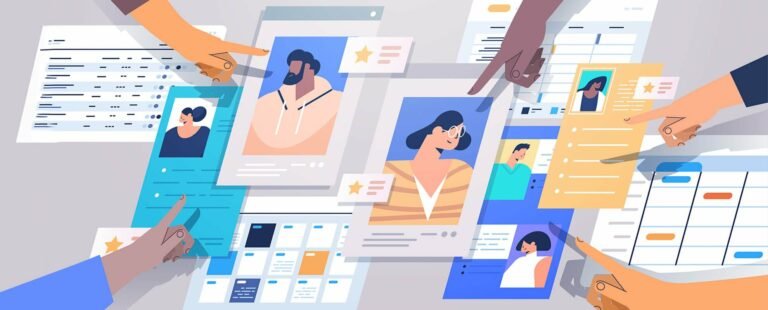Building a culture of continuous learning.
One of the most common mistakes we have seen organizations make is to think that once someone has been trained, they are done. Just because someone has completed a course or program doesn’t mean they are done learning.
Add to that, today’s businesses face an onslaught of new challenges, technologies, and opportunities requiring employees to continuously update their skills just to keep up. The days of static job descriptions and “set it and forget it” learning plans are gone. Learning must now be continuous, experiential, and geared towards developing the skills needed to meet the demands of the job. The organization that doesn’t make continuous learning a priority will soon fall behind those that do. They will become less innovative, less adaptable, and less able to meet the ever-changing needs of their customers.
Hence, organizations must embrace a culture of continuous learning to meet the challenges of today and tomorrow. In this article, we will discuss what a culture of continuous learning is, the benefits of such a culture, and how you can create one in your organization.
A culture of continuous learning.
A culture of continuous learning is an organizational culture where employees are encouraged and supported to continuously update their skills and knowledge. It is a culture that values learning and sees it as an essential part of being successful. If done correctly, a culture of continuous learning can transform an organization, making it more adaptable, innovative, and successful.
However, before we discuss how to create a culture of continuous learning, let’s first look at the benefits of continuous learning.
The benefits of continuous learning.
A culture of continuous learning has many benefits for organizations. Here are a few of the most important ones:
1. Improves employee engagement
When employees feel like they are part of a team and are working towards a common goal, they are more engaged. A culture of continuous learning helps to create this sense of purpose and belonging as it gives employees a reason to stay with the organization.
2. Encourages innovation
A culture of continuous learning encourages employees to think outside the box and come up with new ideas. It also helps to identify potential leaders who can take the organization in new and innovative directions.
3. Develops a resilient workforce
In today’s ever-changing business environment, it is essential to have a workforce that is adaptable and can quickly learn new skills. A culture of continuous learning helps to develop such a workforce.
4. Attracts and retains top talent
Organizations that have a culture of continuous learning are more attractive to top talent. This is because these organizations are seen as being committed to the development of their employees. Top talent wants to work for an organization that is invested in their development and will help them grow their skills and knowledge.
5. Increases productivity
A culture of continuous learning leads to more productive employees. This is because they are constantly updating their skills and knowledge, which leads to them being more effective at their jobs.
6. Improves customer satisfaction
Happy employees lead to satisfied customers. When employees are engaged and have the skills and knowledge they need to do their jobs well, they are more likely to provide great customer service. This leads to improved customer satisfaction levels.
7. Develops leaders
A culture of continuous learning helps to identify and develop leaders within the organization. These leaders will have the skills and knowledge to take the organization in new directions and to meet the ever-changing needs of customers.
8. Builds relationships and trust
A culture of continuous learning helps to build relationships and trust within the organization. Employees feel like they can trust their leaders and that their skills and knowledge are being continuously developed. This leads to a more positive work environment and increased employee morale.
9. Enhances the reputation of the organization
An organization that is committed to the continuous learning of its employees is seen as being a leader in its industry. This enhances the reputation of the organization and makes it more attractive to customers, employees, and investors.
10. Fosters a growth mindset.
A culture of continuous learning leads to improved performance as it helps employees to develop a growth mindset. A growth mindset is a belief that abilities and intelligence can be developed. This leads to employees who are more adaptable and resilient.
Create a culture of continuous learning
Easier said than done, right? Well, not necessarily. Of course, it will take some effort to change the way your organization views and approaches learning, but it is well worth it. So, how can you create a culture of continuous learning in your organization?
The Right Mindset.
It’s easy to become complacent and rely on the skills that we already have, but if we want to grow as individuals and organizations, we need to constantly challenge ourselves. Learning new things can be difficult, and it often requires us to stretch beyond our current abilities. But it’s this willingness to embrace change that allows us to adapt and thrive in an ever-changing world. By continually pushing ourselves to learn new things, we ensure that we always have the skills and knowledge necessary to meet the challenges of the future.
Hence, the first step in creating a culture of continuous learning is to develop the right mindset. Learning must be seen as an essential part of everyone’s job, not just something that is done by those in training or development roles. And it must be seen as a lifelong process, not something that ends after we receive our diploma or degree. Only when everyone in the organization views learning as a priority will it become embedded in the culture.
Shared Vision.
If the goals of the organization and that of its employees are not aligned, learning is bound to fail. For a culture of continuous learning to thrive, everyone in the organization must be working towards the same goal. There needs to be a shared vision for what the organization wants to achieve and how learning will help it get there. This means inviting employees to share their ideas on what they want to learn and how it can help the organization achieve its goals. It also means creating a learning plan that is aligned with the organization’s strategy.
When everyone is working towards the same goal, learning becomes a natural part of the culture. It is no longer something that is done separately from work but is integrated into everyday tasks. This allows employees to see how their learning is benefiting the organization and motivates them to continue learning new things.
Collaboration.
Albert Einstein once said, “The more I learn, the more I realize how much I don’t know.” This quote captures the essence of why collaboration is so important in a culture of continuous learning. None of us knows everything, and we can all learn from each other. By sharing our knowledge and experiences, we can help each other grow and develop new skills.
With collaboration, learning is not a one-way street. It is a two-way process where everyone has something to contribute. This open exchange of ideas leads to faster learning and greater innovation. It also helps build relationships and trust within the organization. When employees feel like they are part of a team and are working towards a common goal, they are more likely to be engaged in their work and more likely to stick around.
For collaboration to be effective, employees need to feel safe sharing their ideas. They need to know that their ideas will be heard and respected, even if they are not used. This can be a challenge, but it is essential if you want to create a culture of continuous learning.
Learning Process.
Organizations must also put the right processes and systems in place to support a culture of continuous learning. This includes providing access to learning resources, such as books, articles, and online courses. It also means creating opportunities for employees to share what they have learned with others.
One way to do this is to establish learning groups, where employees can meet regularly to discuss what they are learning. These groups provide a space for employees to share their experiences and learn from each other. They also help build relationships and trust within the organization.
Another way to support learning is to create a system for sharing knowledge. This could be an online repository of resources, such as articles and presentations. It could also be a mentorship program, where more experienced employees share their knowledge with newer employees.
By putting the right processes and systems in place, organizations can ensure that employees have the resources they need to continue learning throughout their careers.
Leadership.
Finally, a culture of continuous learning cannot thrive without the support of leadership. Leaders need to provide the resources and opportunities for employees to learn. They also need to be role models for lifelong learning. By continually learning themselves, leaders show employees that it is a priority for the organization.
Leaders also need to create an environment where employees feel comfortable taking risks. Learning requires experimentation, and sometimes this means making mistakes. But if employees are afraid of making mistakes, they will be less likely to take risks and try new things. Leaders need to create a safe environment where employees feel like they can experiment and learn from their mistakes.
When leaders support and encourage learning, it becomes a priority for the entire organization. Employees are more likely to take advantage of learning opportunities and to see learning as a valuable part of their job.
Conclusion:
Too often, learning is seen as a luxury, something that happens when we have time and resources. But in today’s fast-paced, ever-changing world, learning is a necessity. A culture of continuous learning is essential for any organization that wants to stay ahead of the competition. By providing the resources and opportunities for employees to learn, organizations can create a culture of continuous learning that will benefit the entire organization.



